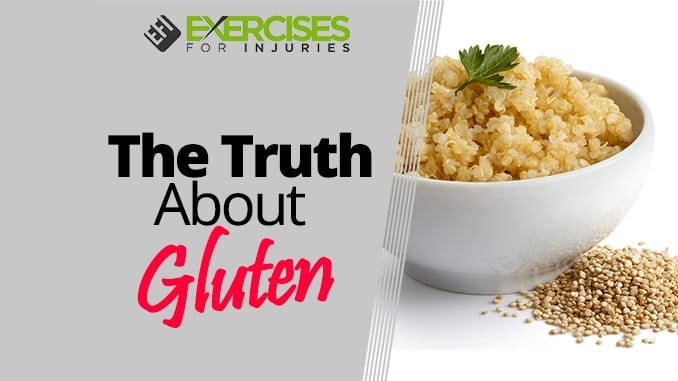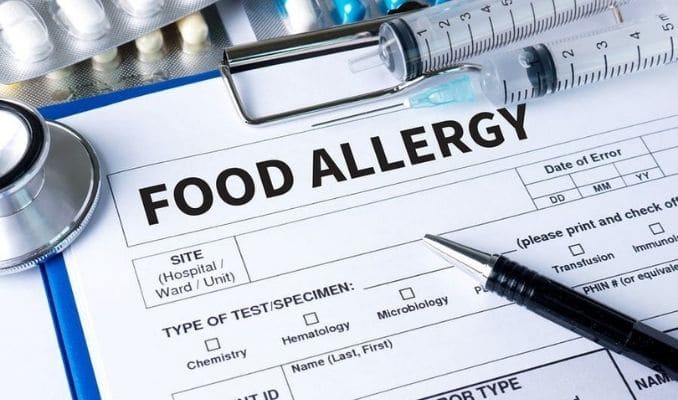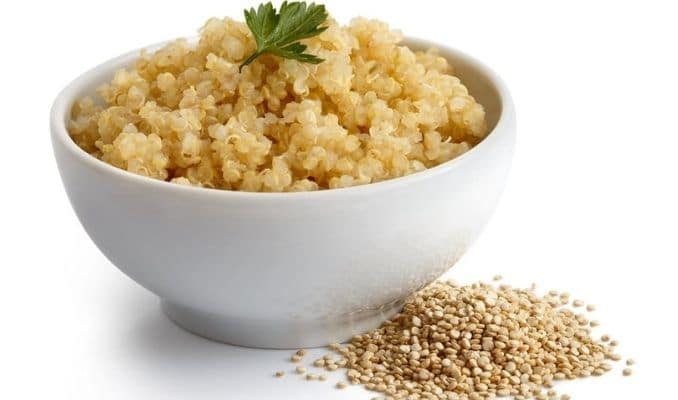
There’s a lot of confusion surrounding the term “gluten” these days. What is gluten? What’s the difference between gluten sensitivity and wheat allergy, and what is celiac disease? Plus, is gluten bad for you even if you don’t have symptoms? Doctors find it hard to keep all the facts straight, and they certainly haven’t discovered all the answers. Let’s look at what we do know as well as strategies to eliminate or limit gluten in your diet.

What Is Gluten?
The word “gluten” comes from a Latin word that means “glue.” This makes total sense since gluten is a natural substance that occurs in certain plants to help maintain their shape. Gluten comes in various forms of proteins, and it gives wheat-based foods their elasticity.
Gluten is found in:
- Wheat like wheat berries, durum, emmer, semolina, spelt, farina, farro, graham, khorasan wheat and einkorn
- Rye
- Barley
- Triticale, which is a cross between wheat and rye
Is Gluten Bad for You?
There’s a lot of controversy surrounding this, but even some world-class athletes are going gluten-free. It seems as if every day, more people chose to eliminate gluten from their diet but not because of any severe symptoms. However, they do claim that gluten-containing foods cause inflammation. Inflammation has been cited as leading to a wide range of problems including cancers, high blood pressure, heart disease, low energy states and even Alzheimer’s disease.
Many people who do not have a specific gluten-related disorder still say that a gluten-free diet makes them feel better. They claim their exercise tolerance improves once they quit eating gluten-containing foods. Now, let’s look at the more well-known problems people may have with gluten.
Gluten Sensitivity
People who suffer from gluten sensitivity have symptoms when they ingest gluten. If gluten is eliminated from the diet, the symptoms go away. The exact cause of gluten sensitivity is unknown, and some researchers think that more than one disease might be involved. The reason for this confusion is that the symptoms might be intestinal and/or extraintestinal (not related to the digestion).
Up to 13 percent of people have gluten sensitivity. There’s no specific test to diagnose this problem, so doctors go by your symptoms and meanwhile rule out other diseases.
The gastrointestinal symptoms of gluten sensitivity may include:
- Abdominal pain or bloating
- Bowel habit abnormalities (diarrhea or constipation)
- Nausea
- Aerophagia (swallowing a lot of air)
- Gastroesophageal reflux disease (sometimes called GERD, acid reflux or “heartburn”)
- Aphthous stomatitis (formation of ulcers, or “canker sores,” in the mouth)
There’s a lot of confusion between celiac disease and gluten sensitivity since the symptoms may be very similar. However, celiac disease comes with other characteristics that make it a completely different disorder.
The extraintestinal symptoms of gluten sensitivity are highly variable. Symptoms may include headache, migraine, fatigue, fibromyalgia, joint and muscle pain, numbness, tingling of the hands and feet, skin rashes, asthma, runny nose, allergies, depression, anxiety, iron-deficiency anemia, folate deficiency or autoimmune diseases.
Celiac Disease
Unlike gluten sensitivity, celiac disease is known to be due to an immune response triggered by eating gluten. The most damaging effect of celiac disease occurs in the lining of the small intestine. The resulting damage to the intestinal lining can lead to other problems such as malabsorption of nutrients.
Some symptoms of celiac disease are very similar to gluten insensitivity, such as:
- Diarrhea
- Fatigue
- Weight loss
- Bloating
- Abdominal pain
- Nausea
- Constipation
- Vomiting
However, there are many symptoms more unique to celiac disease, like:
- Anemia, usually due to iron deficiency
- Thinning of the bones (osteoporosis) or softening of bone (osteomalacia)
- Itchy skin rash with blisters (dermatitis herpetiformis)
- Tooth enamel damage
- Mouth ulcers
- Headaches and fatigue
- Nerve damage, including numbness and tingling in the feet and hands, difficulty with balance and cognitive impairment
- Pain in the joints
- Spleen malfunction (hyposplenism)
- Acid reflux and heartburn
As you can see, celiac disease is a potentially much more serious condition. In children, the disorder can lead to development problems and learning disabilities.
Another difference between celiac disease and other gluten-related disorders is that there are specific diagnostic tests to diagnose the disease. For instance, doctors can look for specific antibodies in your blood or even perform genetic testing to confirm the diagnosis.

Wheat Allergy
Like any food allergy, wheat allergy is a type of body response to when you eat wheat. Not all wheat allergies are due to gluten since you might be allergic to some other component of wheat.
The potential symptoms of a wheat allergy are numerous. They include sacroiliitis (back, hip and buttock pain), eczema (rash), hives (urticaria), asthma, “hay fever,” angioedema (severe swelling of the face and throat), abdominal cramps, nausea and vomiting. Less common symptoms include anaphylactic shock (severe, life-threatening allergic reaction), anxiety, joint pain, bloating, chest pain, mood disorders, diarrhea, dizziness, headache, muscle aches and pains, palpitations (racing heart), psoriasis, irritable bowel syndrome (IBS), swollen throat or tongue, fatigue and cough.
Is Gluten Sensitivity Overdiagnosed?
The controversy surrounding gluten sensitivity partly stems from the fact that it’s not easily defined. Besides not having a specific diagnostic test, the disorder overlaps with several other digestive problems like irritable bowel syndrome, lactose intolerance and wheat allergy.
The other problem is that claiming that you have gluten sensitivity has become somewhat of a fad. The result is that many people self-diagnose, are overdiagnosed or get underdiagnosed because doctors are fed up with people claiming they have this problem.
Even more controversial is that gluten has been linked by some to neurological and psychiatric disorders, such as schizophrenia, anorexia, bulimia, autism, nerve damage, balance problems, attention deficit hyperactivity disorder (ADHD) and even hallucinations (“gluten psychosis”).
Should I Just Cut Carbs Out of My Diet?
One thing that’s for certain is that the average Western diet includes too many carbohydrates. We love our bread, pastries, pasta and cereals. Cutting out gluten from your diet might help avoid other health problems. Still, this might be more due to total carb reduction than a relief from gluten.
For example, metabolic syndrome is a constellation of disorders that increase your risk of diabetes. The conditions include:
- High blood pressure
- Elevated blood sugar
- Too much body fat around the waist
- High cholesterol or triglyceride levels
If you have metabolic syndrome, your risk is increased for diabetes, heart attack and stroke. Research has shown that decreasing carbs from your diet can help reduce or prevent the occurrence of metabolic syndrome.
Is It All the Same Problem?
At this point, it gets even more interesting — and confusing. It turns out that metabolic syndrome has some overlapping symptoms with gluten sensitivity, such as intestinal problems and even psychiatric disorders. Could gluten be the underlying cause of it all? Even though it’s not that simple, it appears that inflammation plays somewhat of a central role in several processes.
Still, be careful not to place everything in the same basket. For example, people with metabolic syndrome tend to be overweight while someone with gluten sensitivity might be very thin or even underweight.
Gluten-free Isn’t Easy
If you feel like some of the symptoms above describe how you feel, you could try a gluten-free diet and see if it makes a difference. As a word of caution, though, it might be a good idea to consult with a medical doctor at the same time. When you go to your appointment, explain what you are doing. Still, ask to make sure another disorder isn’t causing your symptoms.
Now you might think going gluten-free is no big deal, but it’s difficult. Here’s a partial list of sources of gluten:
- Pasta
- Noodles
- Bread and pastries
- Crackers and snacks
- Baked goods
- Cereal and granola
- Breakfast foods
- Breading and coating mixes
- Sauces and gravies
- Flour tortillas
- Beer (although gluten-free beer exists)
Here are other foods that may contain gluten used in processing or preparation:
- Energy bars and granola bars
- French fries: This is due to cross-contact from wheat in fryers
- Potato chips: Some potato chips contain malt vinegar or wheat starch
- Processed lunch meats or preseasoned meats
- Candy and candy bars
- Soups
- Multigrain tortilla chips or tortillas
- Salad dressings and marinades
- Starch or dextrin
- Brown rice syrup: May be made with barley
- Vegetarian burgers
- Soy sauce
- Cake fillings
- Eggs served at restaurants: Some restaurants put pancake batter in their scrambled eggs and omelets
Gluten Alternatives
Now some of you might not want to part from cakes, bread and pastries. The good news is many alternative flours exist. It might take some time getting used to cooking with these, but there are tons of online recipes that show you how to make delicious gluten-free foods. Try these ingredients that are not only gluten-free but also healthier when compared to wheat-based products:
- Brown rice
- Sweet potato
- Quinoa
- Almond flour
- Coconut flour
- Chickpea flour
So, there you have it — the truth about gluten. It’s not the source of all evil, but you might feel better and have more energy if you eliminate or reduce gluten in your diet.
If you want to know what foods will help you shape up and shed inches while providing natural cure to illnesses, then check out the Best Foods That Rapidly Slim & Heal in 7 Days program, here!


